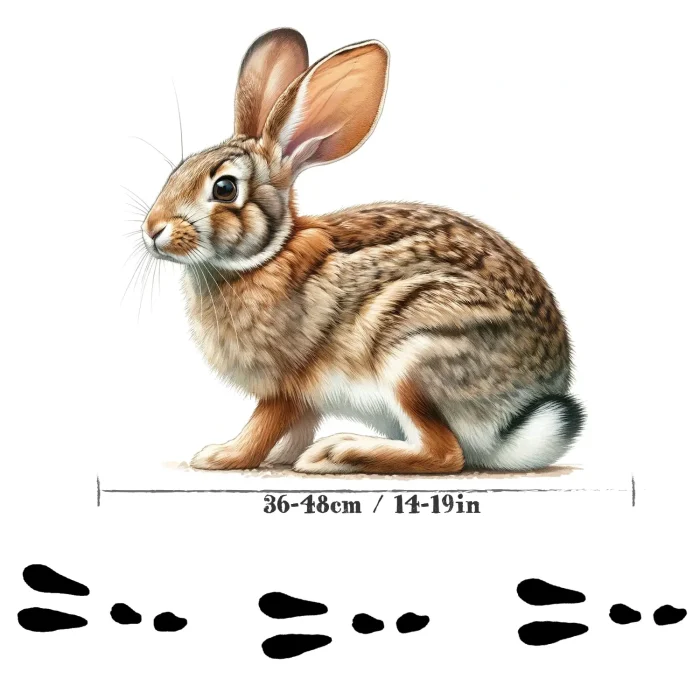

Cottontail Rabbit
Eastern cottontail, New England cottontail, desert cottontail
Sylvilagus floridanus
This page may contain affiliate links.
Read our disclosure and privacy policy here.
The cottontail rabbit is a fluffy bundle of energy commonly spotted in meadows and backyards across North America. With its soft, brown fur and characteristic white “cotton” tail, this rabbit is not only a cute sight but also an important part of the ecosystemAn ecosystem is a community of living organisms, like insects and birds, and non-living components, like water and rocks, that interact with each other in a specific area. Learn More. Cottontail rabbits are known for their impressive jumping skills and quick reflexes, which help them escape predators. Found from Canada to South America, they adapt to various climates and are often seen nibbling on a range of vegetation.
Cottontail Rabbit
Common Name
Other Names
Latin Name
Distribution
Appearance
Size
Habitat
Behavior
Diet
Lifecycle
Communication
Defense Mechanisms
Ecological Importance
ConservationThe act of protecting and preserving natural resources and the environment. Conservation efforts are important to protect beavers and their habitats. Learn More Status

There’s a lot to explore right where we are, in our own neighborhoods and backyards! Join us while we get off the couch and explore the everyday wonders of nature, science, space, engineering, art, and anything else we stumble upon during on our adventures.







